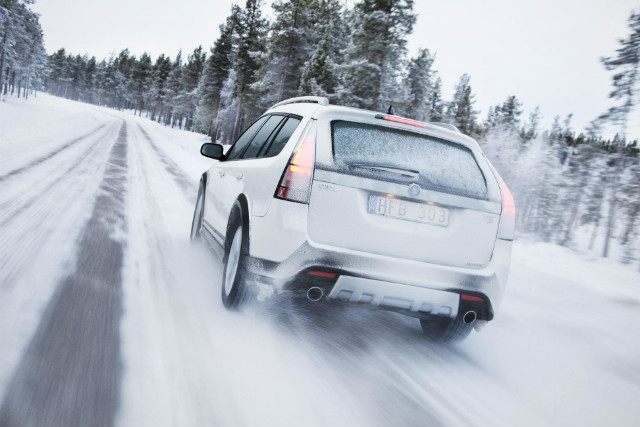Winter tyres have been much discussed over the past few years, especially at times when severe winter weather hits the nation. While winter tyres are optional in Britain, it has actually become compulsory in some parts of mainland Europe for drivers to keep a set of both summer tyres and winter tyres.
But what are winter tyres exactly? How do they work? When should they be used and are they worth buying and using? These are the sort of questions we’re going to tackle in this guide to winter tyres.
What are winter or snow tyres?
Winter tyres, sometimes referred to as snow tyres, are designed to give cars extra grip when driving in cold temperatures (below seven degrees centigrade) and on snow, ice and damp roads.
A way of distinguishing a winter tyre from other kinds of tyre is to look at the sidewall of the tyre, where a symbol showing a snowflake or snow-topped mountain is usually found.
Winter tyres use a rubber compound that’s softer than other types of tyre and have a tread pattern that’s designed specifically to retain grip in winter conditions. The tread blocks on winter tyres are covered with little jagged slits, known as sipes, which allow them to bite into the road surface.
What is the difference between summer and winter tyres?
While winter tyres are designed for handling the treacherous conditions winter weather can create, summer tyres are optimised to suit drier and warmer weather. While winter tyres are something you’ll likely have to purchase, the majority of cars sold in Britain are fitted with summer tyres as standard.
Winter and summer tyres are made of a different mixture of materials, with winter tyres featuring more natural rubber which is less affected by cold temperatures.

Winter tyres also feature more grooves than summer tyres and this is another difference that makes winter tyres more competent in coping with rain and snow. The grooves are more effective at clearing away water and snow, allowing the rubber compound on the tyre to continue gripping the road properly.
When to use winter tyres
Some motorists might be under the impression that winter tyres are only for the most extreme winter weather – when there’s snow and ice all over the roads. This is not the case, however.
Anytime when the temperatures are consistently below seven degrees centigrade on a day-by-day basis is a good time to have winter tyres installed on your car. The temperature outside has a great influence on not only how cars behave in terms of performance but also how their tyres work on the road surface, whether or not it’s bone dry.
Whether it’s wet or dry, the winter tyres do a better job of holding grip on the road than summer tyres during the winter months when the country is at its coldest. Once temperatures rise above seven degree centigrade, summer tyres are better for grip on dry roads.
How much do winter tyres cost?
The cost of winter tyres can vary depending on the supplier and the type of car you own. Different cars will require bigger and more expensive winter tyres than others.
As an estimate, a set of four winter tyres with spare rims can cost somewhere around £500 to £600 for a small car.

It could actually cost a little more then that, because you may want a fifth, spare winter tyre in case there’s a problem with one of the four tyres fitted and it needs replacing. Having a spare summer tyre fitted in combination with three winter tyres can cause an unwelcome balance to how your car handles.
It’s a good idea to get quotes for winter tyres from different local car part stores that supply these. A lot of manufacturers nowadays can also offer winter tyres for your car if it comes from their brand.
Alternatively, you could the tyres on your car directly swapped with a set of winter tyres at a service garage. If you’re looking for somewhere to store your summer tyres while there not in use, then car part stores and manufacturers can help out here.
You can pay a garage (private or manufacturer-owned) to store your summer or winter tyres for six months, typically for a cost of £10 per tyre. Therefore, a full set of tyres and a spare will likely cost roughly £100 to have taken care of for half a year.
Should I fit winter tyres to my car?
In Britain, you’re under no obligation to get winter tyres for your car, but owning a set of them will give you a welcome bit of extra security when driving on the roads during the winter months. The initial costs can seem a bit intimidating at first, but once you have a set, they should be able to last you for many winter periods in the future, and your summer tyres will also last longer.
Winter tyres make more sense if you live in a remote area of the country, where winter conditions are likely to affect the roads more severely. In other areas, winter tyres can be harder to justify but really it depends how often your local area dips below seven degrees.
A lot of drivers still continue on through the winter months driving their car with summer tyres. If this is what you choose to do, however, extra caution in how you use the throttle and how you approach corners (particularly high speed turns) is wise until the weather heats up again. That’s because stopping distances and cornering grip can be dramatically reduced.




